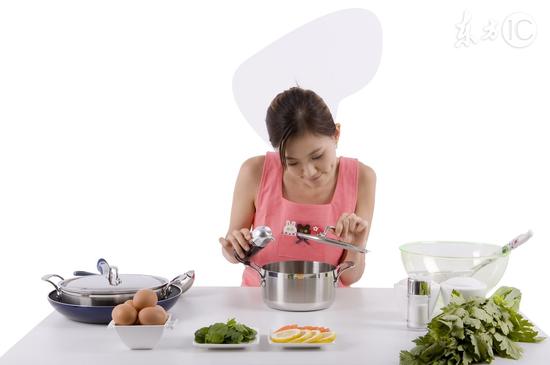To eat healthily, we should not only eat abundantly, but also learn to cook. You know what? If the cooking method is unreasonable, nutrition will also sneak away. These seven wrong ways of cooking, don't do them~~
 Half of the nutrition is lost when cooking like this
Half of the nutrition is lost when cooking like this 1. Cutting before washing
Some people cook and like to cut before washing. However, when the vegetables are washed after cutting, the water-soluble vitamins in the vegetables, such as B vitamins, vitamin C, and some minerals will dissolve into the water, resulting in nutrient loss.
Suggestion: Wash the vegetables carefully first, and try to control the moisture before cutting.
2. It is too broken
If the vegetables are cut too finely, their contact surface with the air is large, and the easily oxidized vitamins will lose more. For example, the loss rate of vitamin C of cabbage after cutting and frying is 31%, and the loss rate after cutting and frying is 51%.
Suggestion: Generally, it is better to cut vegetables large than small. Vegetables should be cut and cooked and eaten to protect vitamins from oxidation.
3. Long cooking time
Oxalic acid in vegetables can be removed by blanching for a while, but the blanching time is too long, and the water-soluble nutrients in vegetables will lose a lot, such as cabbage blanching for 2 minutes, the loss rate of vitamin C is as high as 60%, and the vitamin C is almost lost after blanching for more than 10 minutes.
Suggestion: When blanching vegetables, the amount of water should be large, the water should be boiled, and the vegetables should not be put too much. As soon as the vegetables change color (such as raw kale turns green after blanching), they should be taken out immediately, put into cold water to cool quickly, and then control to dry the water. After this treatment, the vegetable has less nutrition loss and beautiful color.
4 Salt is put too early
Many people have the habit of putting more salt or putting salt early when cooking, which will cause excessive juice flow out of vegetables, not only causing nutrient loss, but also making dishes collapse and affect the taste.
Suggestion: Add salt when the dishes are ripe or before cooking. In this way, even if a small amount of salt is added, the salty taste will be felt, which is also conducive to reducing salt intake.
5 Long cooking time
In order to retain more water-soluble vitamins in vegetables, it is recommended to use the method of quick blanching and quick frying. That is to say, before frying vegetables, open the fire and quickly blanch them in hot water for 3 seconds. Then when frying, put a little oil (let the oil just soak in the bottom of the pot), so that the cooked vegetables are green, taste good, and lose less nutrition.
6. Too much cooking
Cook at home, try to choose low temperature steaming and boiling, less high temperature frying and frying. On the one hand, we can retain as many nutrients as possible; Secondly, avoid energy surplus caused by eating too much edible oil.
7. Did not learn to thicken the sauce
Many chefs like to thicken the sauce when cooking. On the one hand, it is to make the dishes taste better. On the other hand, thicken the sauce can also help to "lock" the nutrition of vegetables and improve the nutritional value. The reason is that thickening can form a protective film on the food materials, thus playing the role of heat insulation. On the one hand, it can reduce the water loss and oxidation of the food materials, on the other hand, it can reduce the loss of vitamins A, C, B2 and other vitamins, and reduce the production of harmful substances in cooking.
Suggestion: The best temperature for thickening is 60 ℃ - 80 ℃, because this is the best gelatinization temperature. When cooking large pot vegetables, the juice should be poured into the tumbling part of the soup when thickening. When mixing neatly arranged or fragile raw materials, the juice should be poured in and pushed along the side of the pot with a shovel to make the juice even gelatinize. Otherwise, the juice will become lumpy.
It is suggested that the recommended amount of vegetables per person per day is 300-500g according to the Dietary Guidelines for Chinese Residents~~


